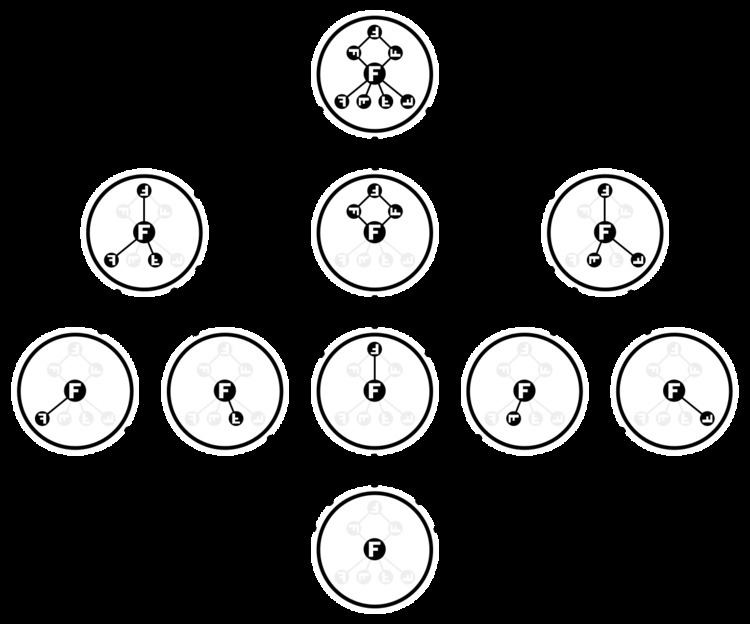In mathematics, the Frattini subgroup Φ(G) of a group G is the intersection of all maximal subgroups of G. For the case that G has no maximal subgroups, for example the trivial group e or the Prüfer group, it is defined by Φ(G) = G. It is analogous to the Jacobson radical in the theory of rings, and intuitively can be thought of as the subgroup of "small elements" (see the "non-generator" characterization below). It is named after Giovanni Frattini, who defined the concept in a paper published in 1885.
Φ(G) is equal to the set of all non-generators or non-generating elements of G. A non-generating element of G is an element that can always be removed from a generating set; that is, an element a of G such that whenever X is a generating set of G containing a, X − {a} is also a generating set of G.Φ(G) is always a characteristic subgroup of G; in particular, it is always a normal subgroup of G.If G is finite, then Φ(G) is nilpotent.If G is a finite p-group, then Φ(G) = Gp [G,G]. Thus the Frattini subgroup is the smallest (with respect to inclusion) normal subgroup N such that the quotient group G/N is an elementary abelian group, i.e., isomorphic to a direct sum of cyclic groups of order p. Moreover, if the quotient group G/Φ(G) (also called the Frattini quotient of G) has order pk, then k is the smallest number of generators for G (that is the smallest cardinality of a generating set for G). In particular a finite p-group is cyclic if and only if its Frattini quotient is cyclic (of order p). A finite p-group is elementary abelian if and only if its Frattini subgroup is the trivial group, Φ(G) = e.If H and K are finite, then Φ(HxK) = Φ(H)x Φ(K).An example of a group with nontrivial Frattini subgroup is the cyclic group G of order p2, where p is prime, generated by a, say; here, Φ ( G ) = ⟨ a p ⟩ .

